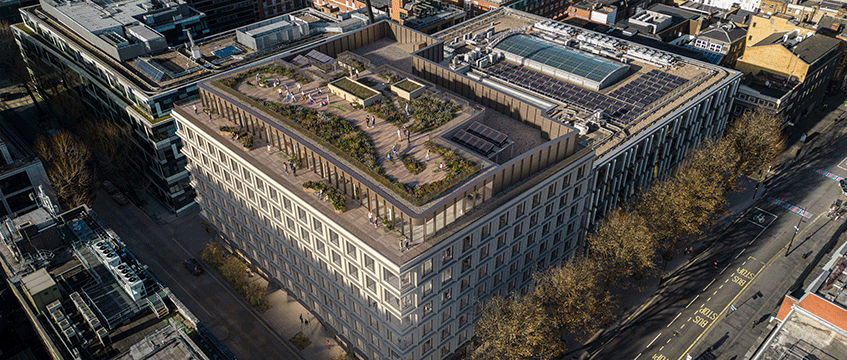Why Derwent is devoted to development
Derwent London chief executive Paul Williams has just celebrated 40 years at the central London-focused property company and yesterday got the gift of posting near-record lettings in an environment where offices have become a dirty word.
The firm reported its second highest H1 lettings on record in the six months ended 30 June, securing £19.3m of rent on 228,000 sq ft, with a further £7m on 81,200 sq ft secured since the end of the period.
However, the lettings boom was in stark contrast to valuation figures, with Derwent’s portfolio falling by 3.7% in the first six months of the year and by 11.4% from H1 2022.
Derwent London chief executive Paul Williams has just celebrated 40 years at the central London-focused property company and yesterday got the gift of posting near-record lettings in an environment where offices have become a dirty word.
The firm reported its second highest H1 lettings on record in the six months ended 30 June, securing £19.3m of rent on 228,000 sq ft, with a further £7m on 81,200 sq ft secured since the end of the period.
However, the lettings boom was in stark contrast to valuation figures, with Derwent’s portfolio falling by 3.7% in the first six months of the year and by 11.4% from H1 2022.
But the mismatch doesn’t appear to be worrying Williams.
While values may be falling on office investments, the need for the best space and the willingness to pay for that type of space is rising, he says. Derwent itself is holding fast on its full-year expectation that ERVs will rise by as much as 3%.
“Contrary to what the bears might be thinking, there’s an awful lot of expansion space being sought,” says Williams. He cites Derwent’s own survey of its occupiers earlier this year, which found 80% were either looking to stay in the same amount of space or expand, and Knight Frank’s more recent global view, which found 77% of occupiers were looking to expand.
Couple that with the volume of jobs being created in London and office development in the capital is a pretty exciting sector to be active in, says Williams.
“The place to be”
In 2021 and 2022, some 335,000 net new office-based jobs were added in London, according to CBRE figures, with a further 235,000 jobs forecast between 2023 and 2028.
Williams says London is still seen as the place to have a European headquarters and, provided that the stock is the right stock – grade-A, sustainable, well-connected – then demand continues to outstrip supply.
While overall office availability remains elevated at 8.5%, the West End remains tight at 3.8% compared with the City at 11.7% and Docklands at 14.3%. New supply is severely constrained. Just 3.4m sq ft of projects are due to complete in the West End by the end of 2026, 28% of which is prelet. Williams says that is just seven months’ supply based on active demand.
And that is why he’s feeling pretty happy about being in central London development.
“We are seeing the beginning of a small group of what we would call motivated sellers,” says Williams (pictured). “I think opportunities are definitely emerging and hopefully with the balance sheet we’ve got, an LTV of only 25% and good interest cover, we could look to buy if we saw the right opportunity, but given the strength of the occupation market, we’re going to keep developing. We’re going to keep going because the demand is there for the right product.”
Standing out from the crowd
The firm has some 435,000 sq ft of on-site projects, some 43% of which is prelet or pre-sold. They comprise the 298,000 sq ft 25 Baker Street, W1, which is 76% prelet by floor area to PIMCO and Moelis, with the Courtyard retail and Gloucester Place offices pre-sold to the Portman Estate, and the speculative 137,000 sq ft Network scheme in Fitzrovia, W1 (pictured above).
Its longer-term pipeline expands to around 1.3m sq ft across four projects – the 240,000 sq ft 50 Baker Street and 150,000 sq ft Holden House, both W1, the 750,000 sq ft Old Street Quarter, EC1, and the 200,000 sq ft 230 Blackfriars Road, SE1.
For Williams, London stands out from the crowd when it comes to office occupation. He says the broad church of occupier types – of which he is seeing growth in demand from AI and medtech alongside the still active financial services and lawyers – has helped keep London active where other global cities like San Fransisco and New York have suffered.
To send feedback, e-mail samantha.mcclary@eg.co.uk or tweet @samanthamcclary or @EGPropertyNews
Main image © Derwent London
See which agents are doing the most office deals in London >>











